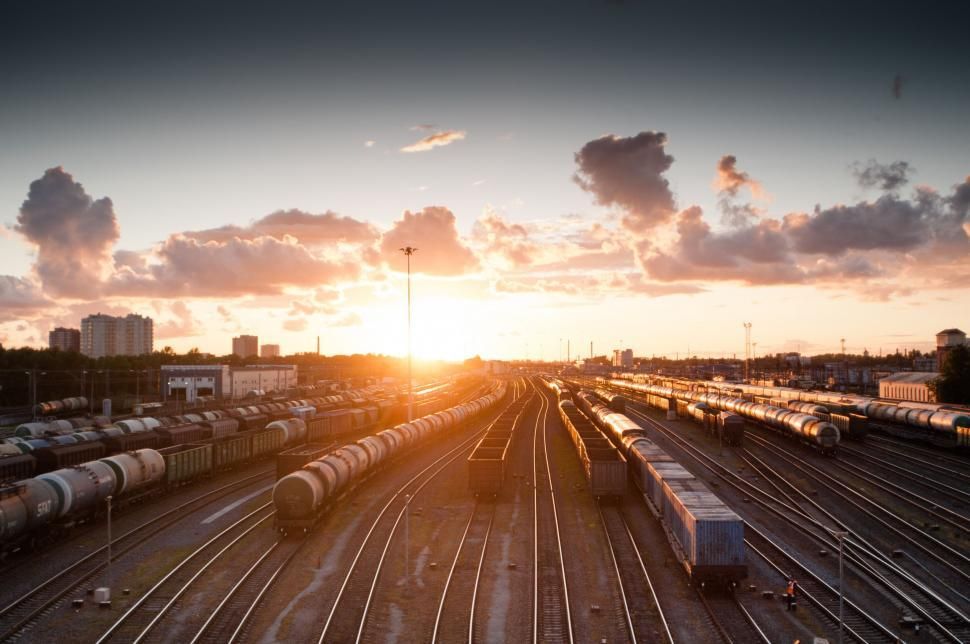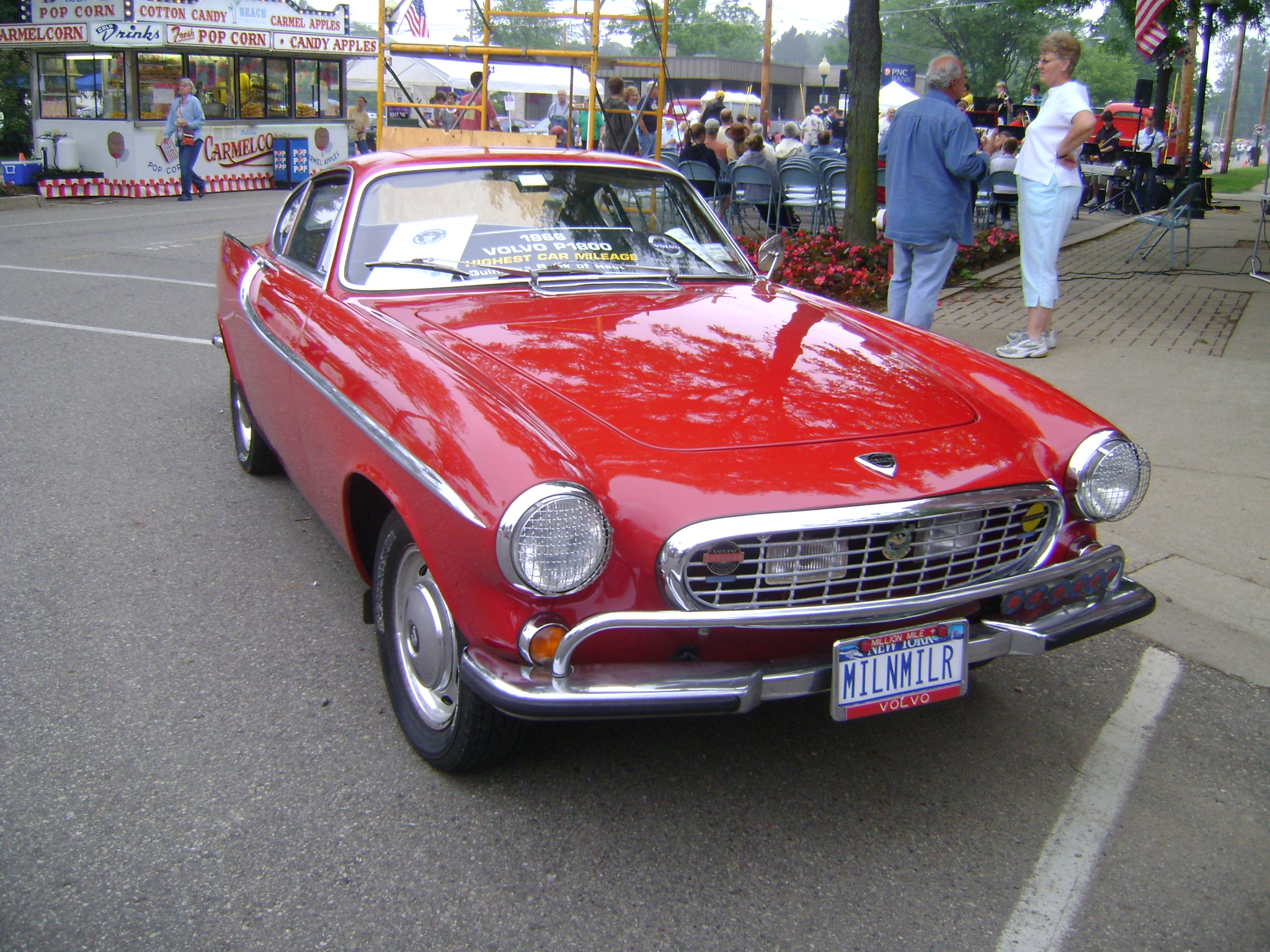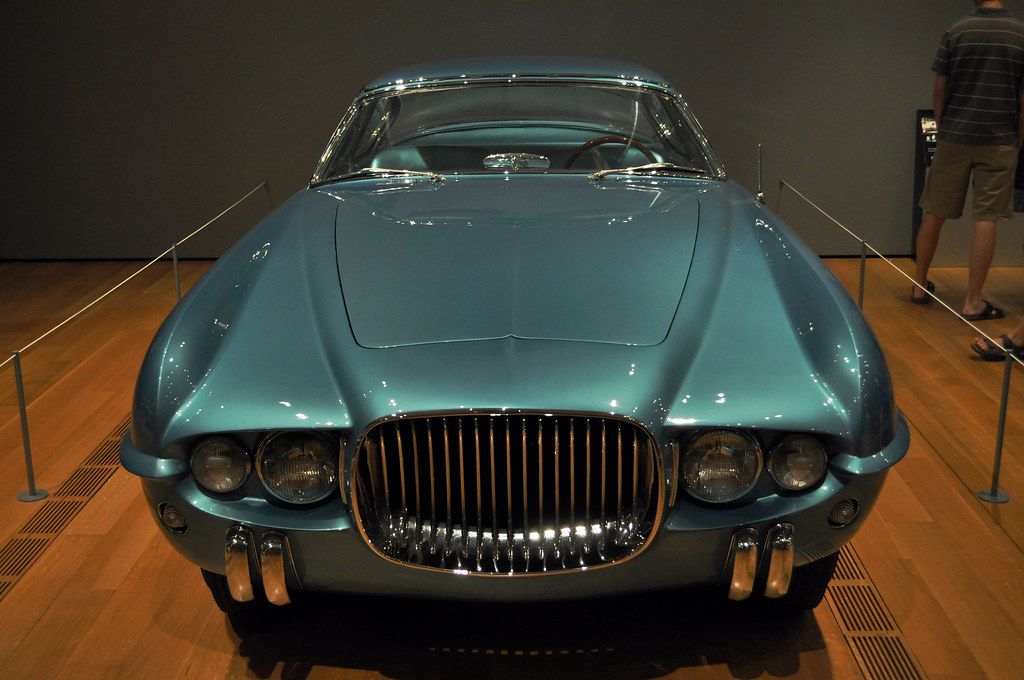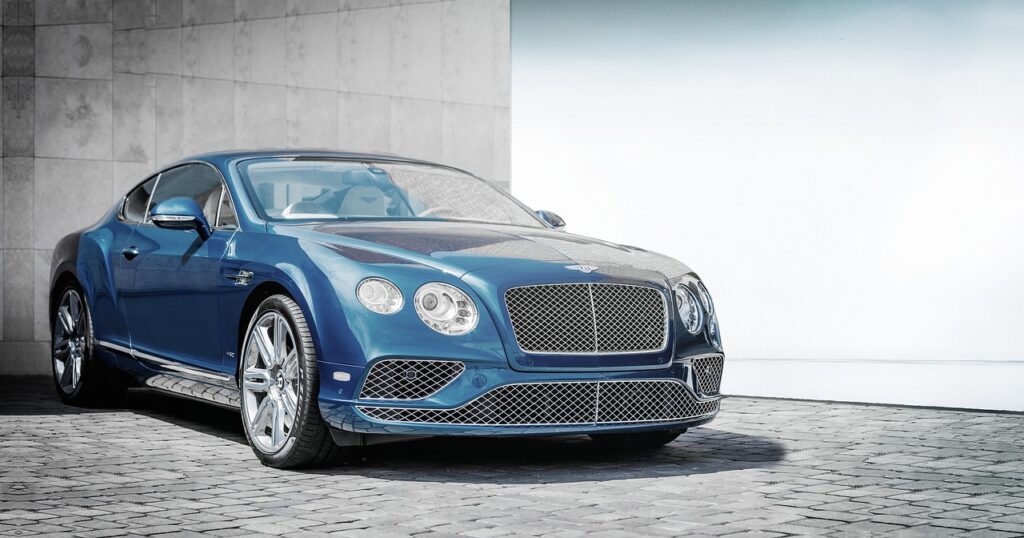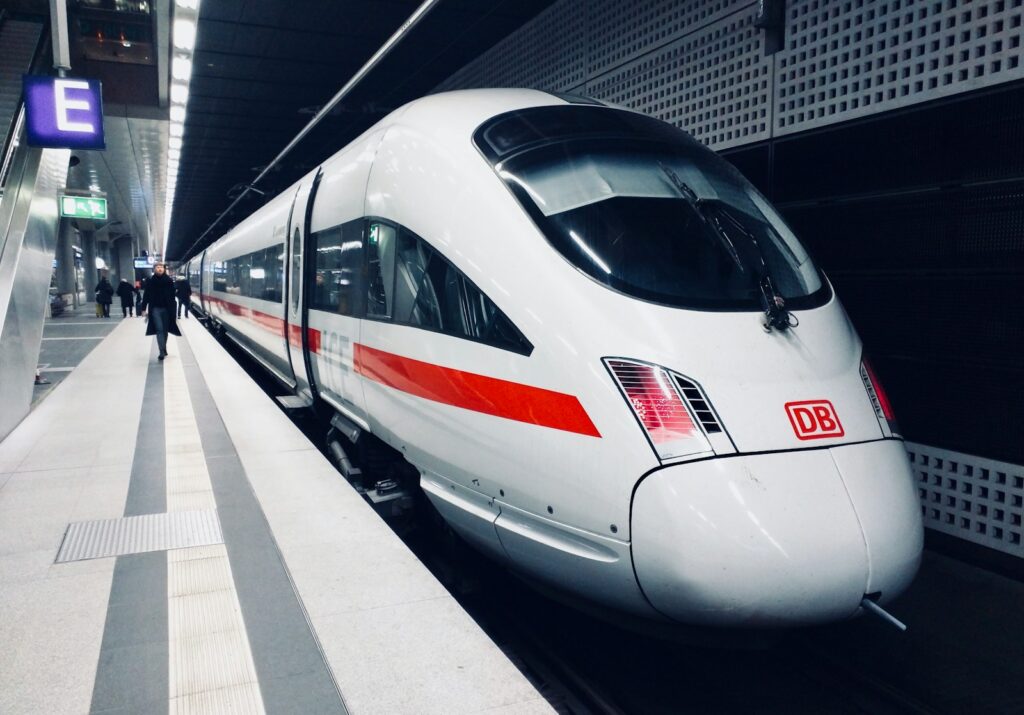
The hum of a train on tracks is a sound deeply ingrained in our collective consciousness, a symbol of progress, connection, and relentless forward motion. For centuries, rail transportation has been a cornerstone of global commerce and personal travel, evolving from rudimentary steam engines to sleek, high-speed marvels. Yet, for every iconic locomotive that shaped history, there exist countless visionary concepts, brilliant minds, and substantial investments that, for one reason or another, remained tantalizingly just out of reach, confined to the drawing board or brief, experimental runs.
Imagine a world where trains are propelled by vacuum tubes, balanced by gyroscopes, or even powered by nuclear energy. These weren’t mere flights of fancy; they were meticulously engineered designs, often backed by successful prototypes and dazzling demonstrations, that promised to redefine what was possible on rails. The history of rail innovation is not just a tale of widespread successes, but also a fascinating shadow history of ambition, occasional folly, and the relentless human drive to push boundaries, even when practicalities eventually halted their journey.
In this deep dive, we’re pulling back the curtain on some of the most remarkable train designs that, despite their ingenuity and potential, never quite made it to widespread commercial tracks. These are the forgotten pioneers, the bold experiments, and the “what ifs” that continue to spark our curiosity and offer valuable lessons, even decades later. Get ready to embark on a journey through the captivating world of trains that almost were, starting with seven incredible concepts that truly challenged the status quo.

1. **Atmospheric Railways**Imagine a railway system where the trains glide along, not pulled by a traditional locomotive, but pushed by the very air around them. That was the audacious vision of engineers in the 1840s, who developed “Atmospheric Railways.” This revolutionary concept aimed to propel trains without the need for onboard engines or conventional steam power, promising a quieter, potentially more efficient future for rail travel, free from the smoke and noise of steam engines that defined the era.
The mechanics behind this intriguing idea involved vacuum tubes running parallel to the tracks, sealed off from the outside world with a continuous valve. As air was meticulously pumped out of these sealed tubes ahead of the train, creating a vacuum, atmospheric pressure would then literally push a piston, attached to the train, along the tube. This elegant application of basic physics was designed to eliminate the heavy, fuel-hungry engines that were characteristic of the era’s steam trains, offering a seemingly simple yet powerful alternative.
Initial demonstrations of these atmospheric systems were nothing short of brilliant, dazzling onlookers with their seamless operation and seemingly effortless motion. Early trials showed trains moving with impressive speed and smoothness, validating the theoretical principles behind the design. The potential for such a system to handle gradients and offer a reliable, consistent mode of propulsion, without the need for complex internal combustion or steam generation on each train, captivated the engineering community.
However, the true test came in real-world conditions, and this is where the grand ambition met its catastrophic end. The ingenious system relied heavily on long, continuous leather seals to maintain the critical vacuum within the tubes. These essential components, unfortunately, deteriorated rapidly when exposed to the unpredictable elements of weather, cracking and losing their integrity. This made it impossible to maintain the necessary vacuum for propulsion, leading to a complete breakdown in operation. The dream of air-propelled trains, while conceptually sound, simply couldn’t withstand the harsh realities of constant outdoor exposure, relegating it to an interesting historical footnote rather than a railway revolution.
Read more about: Sydney, Australia: What America Can Learn From Its History, Economy, and Unique Identity

2. **Bennie Railplane**In the 1930s, when traditional trains were typically chugging along at modest speeds, a Scottish inventor named George Bennie dared to dream bigger, much bigger. His groundbreaking concept, the Bennie Railplane, was a propeller-powered monorail system that promised to redefine high-speed travel, projecting exhilarating speeds of up to 120 mph. This was an astonishing target at a time when conventional trains could only manage about half that velocity, truly envisioning a future where rail travel was as swift as aviation, without the complexities of flight.
Bennie’s design was as visually striking as it was innovative, featuring sleek, streamlined carriages suspended gracefully beneath raised rails, giving it an unmistakable aircraft-inspired layout. The entire system was designed to operate above existing rail lines or roads, minimizing land acquisition costs and allowing for express passenger and light freight services, such as mail or perishable goods, to bypass congested ground traffic. This elevated approach was a clear advantage, offering unimpeded travel pathways.
To prove his visionary concept, a test track, measuring 229 meters, was meticulously constructed close to Milngavie, near Glasgow, Scotland. This prototype dazzled onlookers and generated considerable excitement, showcasing a mode of transport that looked, and moved, like something straight out of a futuristic novel – an elegant blend of air and rail technology. It demonstrated the practicality of propeller propulsion on a rail system and the stability of its suspended monorail design, receiving considerable media attention and public fascination during its operational years.
Despite its impressive performance and undeniable appeal, the Bennie Railplane encountered an insurmountable obstacle: the crushing economic reality of the Great Depression. The severe financial downturn meant that crucial funding, which was essential for further development and widespread implementation, simply dried up. Consequently, the magnificent prototype was left to rust away, a silent testament to a brilliant idea born at the wrong time, before eventually being demolished in 1956, leaving behind only photographs and the echo of what might have been. Its legacy, however, continues to inspire discussions about alternative transit solutions.

3. **Brennan Monorail**Louis Brennan, an inventor renowned for his ingenuity, particularly in guided missile technology, also conceptualized a truly remarkable train design in the early 20th century: the Brennan Monorail. This visionary system defied conventional wisdom by using powerful gyroscopes to maintain its stability, allowing it to operate elegantly on a single rail rather than the usual dual tracks. It was a bold solution to the engineering challenges of traditional rail, promising increased speeds around curves and reduced infrastructure complexity by doing away with intricate suspension systems and wide track beds.
The mechanics of the Brennan Monorail were a marvel of physics in action. Two heavy gyroscopes, spun at high speeds by electric motors, created a powerful stabilizing force that kept the entire carriage upright on a single rail. This ingenious mechanism allowed the train to lean into turns much like a bicycle, potentially overcoming the speed limitations that conventional trains faced on sharp curves. The single-rail design also meant that less land was needed for tracks, a significant cost advantage.
The public’s first glimpse of this marvel came at the 1909 Japan-British Exhibition, where Brennan’s demonstration astonished crowds. The gyroscopically balanced vehicle remained perfectly upright, even as passengers deliberately shifted their weight to one side, showcasing an almost magical feat of engineering. Its ability to maintain equilibrium on a single track was not only impressive but also opened up exciting possibilities for urban transport and rugged terrains where dual tracks would be impractical or prohibitively expensive, such as mountainous regions.
Initially, military applications seemed highly promising for this unique balancing monorail, given its stability and potential for rapid deployment in varied environments. However, the promising trajectory of the Brennan Monorail was tragically derailed by a fatal crash during testing, not directly involving the monorail itself, but related to its developmental process or an associated demonstration. This unfortunate incident, despite the technology’s inherent brilliance and successful demonstrations, caused investors to withdraw their support and funding, effectively grounding Brennan’s gyroscopic dream. The inherent risk associated with a system that *would fall anytime* without a constantly operating gyroscope, coupled with the accident, proved too great for widespread commercial confidence.
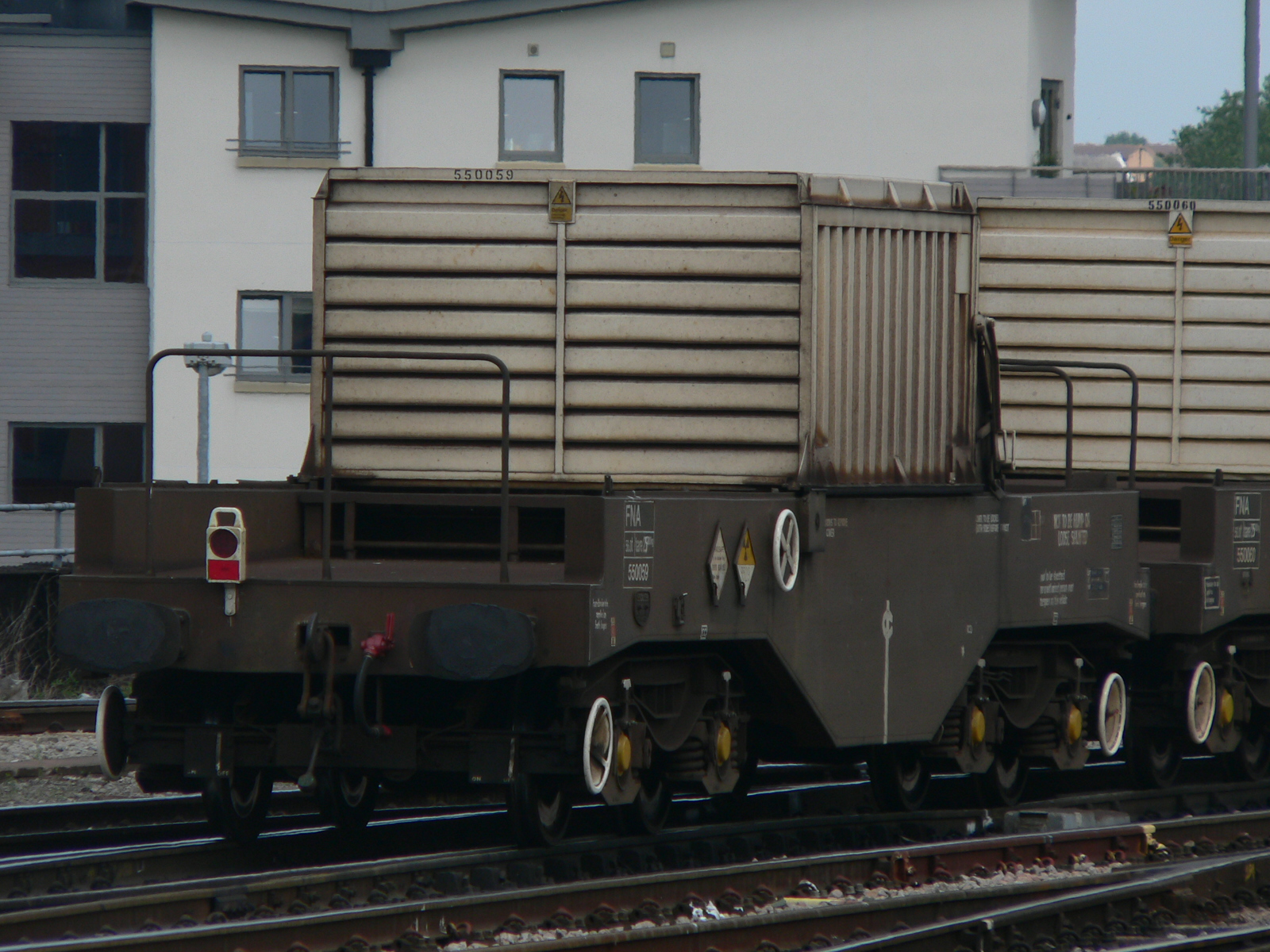
4. **Nuclear-Powered Locomotives**In the optimistic “atomic age” of the 1950s, engineers dared to imagine harnessing the immense power of the atom to drive trains. This audacious concept led to the X-12 nuclear locomotive program, which aimed to create a vehicle with an almost unlimited range, dramatically eliminating the need for frequent refueling stops or extensive overhead electrification. The dream was a train that could travel vast distances without interruption, a true symbol of ultimate efficiency and energy independence on rails, a vision that captivated the imagination of a generation.
The designs for these radical locomotives were incredibly ambitious, incorporating heavily shielded reactors and sophisticated radiation containment systems. Engineers meticulously planned to integrate these powerful, yet potentially dangerous, energy sources into a mobile platform, addressing the complex challenges of safety and operational integrity. The intent was to ensure that, even in the event of a catastrophic derailment or collision, the highly radioactive core would remain secure, preventing environmental contamination and public exposure.
The potential advantages were enormous: unprecedented power output, exceptional fuel economy that would render traditional fuel depots obsolete, and a strategic independence from fossil fuels. It was believed that a single fueling could power a train for years, opening up possibilities for continuous, long-haul freight operations and rapid passenger transit across continents, vastly superior to the limitations of diesel or electric trains of the era.
However, as the initial enthusiasm waned, a host of practical concerns began to surface, ultimately leading to the program’s demise. Foremost among these were the significant accident risks associated with carrying a fully operational nuclear reactor through populated areas, the immense weight required for adequate shielding to protect crew and passengers, and growing public opposition to the idea of “atomic trains” rumbling through their communities. These formidable challenges, coupled with the rapid advancements in diesel-electric technology, ultimately directed nuclear power toward more stationary applications, such as power generation plants and naval vessels, acknowledging that the complexities and dangers of mobile nuclear propulsion were simply too great for widespread railway applications.
Read more about: The World Is Watching: China’s Military Parade Signals a Reshaping of Global Power Dynamics

5. **Schienenzeppelin**One of the most visually striking and technologically advanced train designs to emerge from the early 20th century was Franz Kruckenberg’s “Schienenzeppelin,” or rail zeppelin. This magnificent, streamlined vehicle was not powered by traditional wheels or traction, but by a massive airplane propeller mounted at its rear, giving it an undeniable resemblance to the iconic airships of the era. This innovative propulsion method allowed it to achieve an astonishing record-breaking speed of 143 mph during tests on German tracks in 1931, making it one of the fastest trains of its time and a marvel of engineering.
The Schienenzeppelin was a triumph of aerodynamic design, featuring a sleek, aluminum-bodied chassis that cut through the air with minimal resistance. Its long, low profile and tapering tail evoked the elegance of its aerial namesake, reducing drag to an absolute minimum. Kruckenberg’s creation represented the cutting edge of engineering, seamlessly combining advanced aerodynamic principles with the practicalities of railway operation, proving that aircraft technology could find a powerful application on the ground.
During its 1931 tests on German tracks, the Schienenzeppelin not only hit its remarkable top speed but also demonstrated impressive acceleration and smooth operation. It effortlessly surpassed the speeds of conventional steam locomotives, thrilling spectators and showcasing a clear path to significantly faster inter-city travel. The project generated considerable public excitement and discussions about the future of high-speed rail, positioning Germany at the forefront of innovative transportation design.
Despite its sensational performance and futuristic aesthetics, the Schienenzeppelin faced critical safety and mechanical challenges that ultimately prevented its widespread adoption. Foremost among these were serious safety concerns regarding the exposed, high-speed propeller blades at the rear, posing a significant risk to anyone coming too close to the train, including passengers, station staff, and even wildlife. Additionally, the mechanical impracticality of connecting multiple units—a fundamental requirement for commercial passenger or freight service—proved to be a major hurdle. Propeller propulsion made coupling difficult, and the lack of traditional brakes also raised operational questions. These issues eventually grounded this innovative hybrid, leading to its dismantling in 1939 and ensuring it remained a fascinating, yet ultimately unrealized, chapter in railway history.
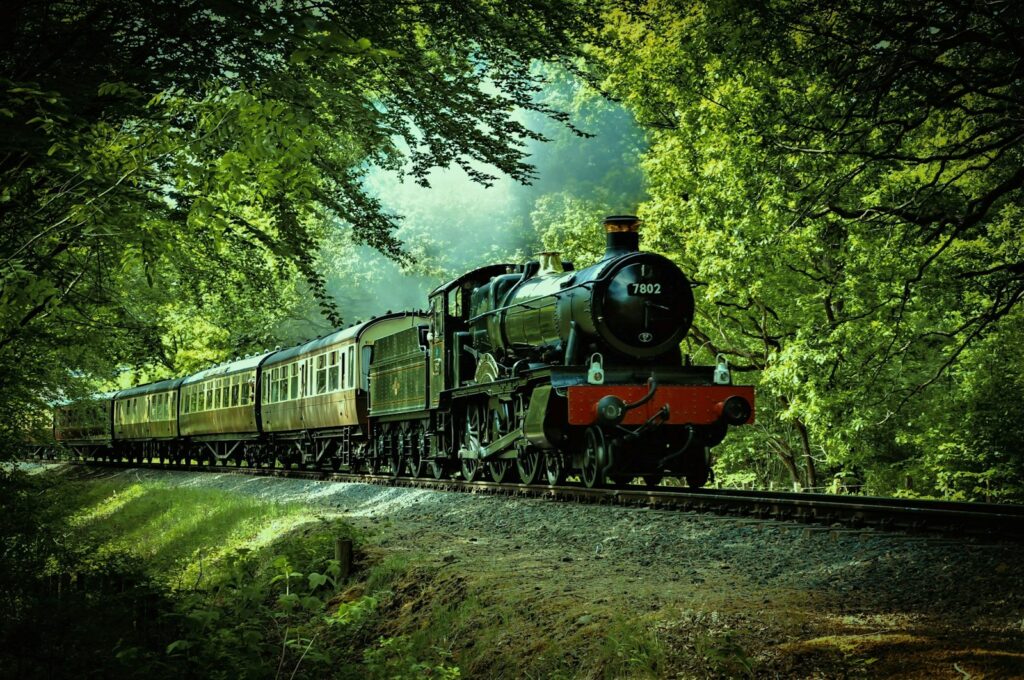
6. **Hotchkiss Bicycle Railroad**In the late 19th century, an intriguing and remarkably clever transportation solution emerged in the form of the Hotchkiss Bicycle Railroad. This bicycle-inspired design took conventional two-wheeled vehicles and adapted them to run on specially designed rails, offering a unique hybrid system. The innovation lay in its promise of rapid and seamless conversion between road and rail travel, envisioning a future where personal mobility was integrated across different terrains with unprecedented ease, truly a forerunner to modern multimodal transport ideas.
The system involved elevated single rails on which specially modified bicycles, often with a large stabilizing wheel running along a lower guide rail, could be ridden. This ingenious setup offered the captivating possibility of truly seamless personal transportation, allowing individuals to travel between destinations without the inconvenience of changing vehicles. Riders could theoretically pedal their modified bicycles onto the rails, traverse distances swiftly and efficiently, and then easily transition back to conventional road travel upon reaching their desired endpoint, making commutes more direct and versatile.
Several limited installations of the Hotchkiss Bicycle Railroad appeared in the 1890s, serving as novelty attractions or practical short-distance connectors in specific areas. While these systems demonstrated the feasibility of the concept and garnered public interest, they never evolved beyond localized applications. The initial investment required for the specialized elevated infrastructure, even for a single-track system, was considerable, posing a barrier to widespread expansion.
However, despite its ingenuity and forward-thinking design, the Hotchkiss Bicycle Railroad ultimately became little more than a transportation footnote. Its fate was sealed by a combination of economic downturns that limited investment in new infrastructure and, more significantly, the eventual rise and widespread adoption of automobiles. The unparalleled convenience and flexibility offered by personal cars, along with the prohibitive costs of building specialized rail infrastructure for individual use, quickly overshadowed the niche advantages of the bicycle railroad, relegating this clever hybrid system to the annals of history.

7. **Tracked Hovercraft**British engineers in the early 1970s developed an incredibly ambitious and innovative transportation system that promised to revolutionize high-speed travel: the Tracked Hovercraft. This pioneering concept brilliantly combined the principles of magnetic levitation with hovercraft technology, aiming for virtually frictionless travel at speeds comparable to aircraft. The vision was to create a new generation of inter-city service that would be both incredibly fast and inherently smooth, elevating the passenger experience to unprecedented levels, without the wear and tear of traditional steel-on-steel railways.
The experimental RTV 31 vehicle was at the heart of this project, designed to glide above a specially constructed concrete track on a cushion of air, propelled by linear induction motors. This sophisticated propulsion system eliminated physical contact with the track, drastically reducing friction and noise, and enabling the vehicle to achieve remarkable speeds with minimal energy expenditure. It represented a bold leap forward in transportation engineering, moving beyond the limitations of wheeled vehicles.
During its limited testing phases in the early 1970s, the RTV 31 achieved promising results, demonstrating the viability of its core technologies and hinting at a future where cities were connected by super-fast, silent hover-trains. It successfully ran at high speeds on its test guideway, showcasing its potential for speeds exceeding 300 km/h and offering a compelling alternative to conventional high-speed rail and even short-haul flights. The technical achievements were considerable, garnering international attention for British innovation.
Unfortunately, despite its considerable technical promise and the exciting possibilities it presented, the Tracked Hovercraft project faced an abrupt and definitive end. Government funding cuts, a common fate for many visionary but expensive research and development projects, terminated the program prematurely in 1973. This left engineers and enthusiasts alike to ponder what might have been—a high-speed network that could have placed Britain at the forefront of transportation innovation, but instead became a poignant example of ambitious concepts cut short by economic realities and shifting political priorities, preventing it from ever making it to commercial tracks.
From Blueprints to Buried Dreams: Exploring 8 More Ambitious Train Concepts and Their Enduring Legacy
Having journeyed through some truly groundbreaking, albeit unrealized, rail innovations, our adventure continues! We’ve seen how brilliant minds dared to challenge the status quo, and how often, real-world constraints or shifting tides prevented their visions from becoming everyday realities. But the story doesn’t end there; there are even more incredible, almost-realized designs that deserve our attention, proving that the human spirit of invention knows no bounds when it comes to the rails.
Let’s dive into eight more ambitious train concepts that, despite their incredible potential and sometimes dazzling prototypes, ultimately remained tantalizingly just out of reach, confined to the drawing board or brief, experimental runs. Each offers a unique glimpse into alternative futures for transportation, reminding us that every journey, even one that doesn’t reach its destination, teaches invaluable lessons.
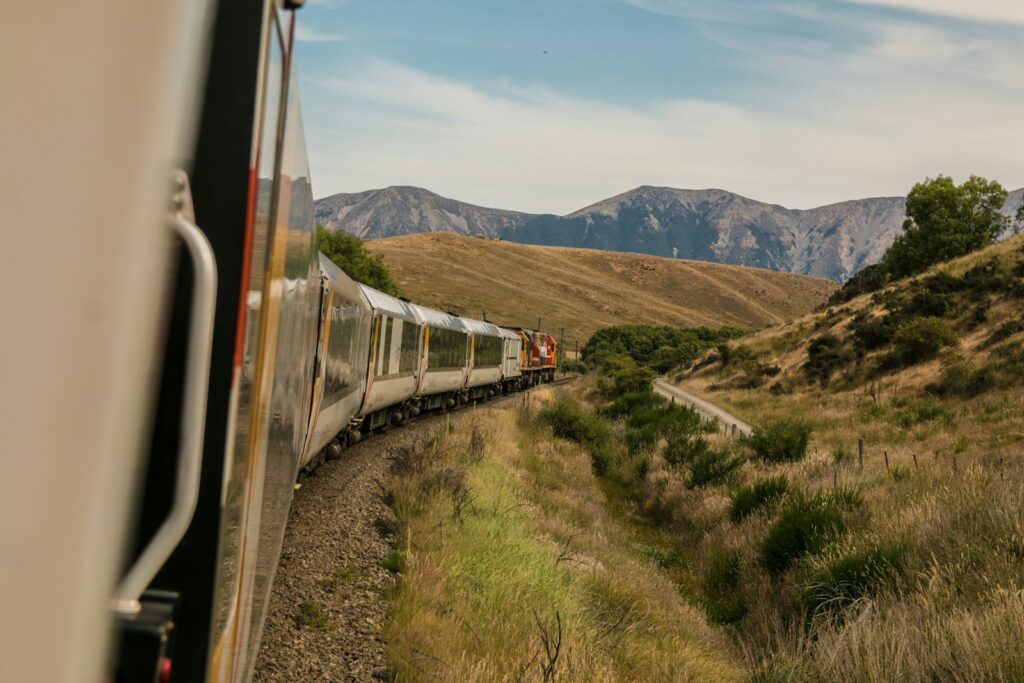
8. **Boynton Bicycle Railway**Imagine a world where your daily commute involved pedaling along an elevated track, high above the bustling streets, on a vehicle that was part bicycle, part train car. That was the truly imaginative concept behind the Boynton Bicycle Railway, pioneered by inventor Eben Moody Boynton in the late 19th century. This unique single-rail system took the familiar two-wheeled design and ingeniously adapted it for rail travel, promising not just a novel experience but also enhanced stability at higher speeds by incorporating stabilizing wheels running along elevated guide rails.
Boynton’s vision wasn’t just a theoretical dream; it came to life on a demonstration line established in Brooklyn in 1892. For a number of years, this fascinating system operated successfully, captivating the public as a novelty attraction. Riders could experience a truly different mode of transport, showcasing the feasibility of a bicycle-like configuration for more widespread use, proving that personal mobility could extend beyond conventional roads.
Despite its technological ingenuity and the initial public interest it garnered, the Boynton Bicycle Railway never achieved widespread adoption. Its fate was largely sealed by the formidable competition from the already well-established conventional railway networks. These existing systems, with their vast infrastructure and proven reliability, ultimately overshadowed the advantages of Boynton’s innovative, yet specialized, design, relegating it to an intriguing, but ultimately minor, chapter in transportation history.

9. **Reno Monorail**Moving into the early 20th century, as urban centers grew denser, new solutions for metropolitan transit became imperative. Enter William Reno and his groundbreaking electric monorail system, specifically conceived to navigate the complexities of urban environments with minimal disruption. His design featured elegant carriages gracefully suspended below streamlined guideways, a deliberate choice aimed at minimizing visual impact on cityscapes while offering an efficient, dedicated transit path.
By 1912, Reno had transformed his ambitious plans into a working prototype, which operated privately to demonstrate its capabilities. The vision was grand: citywide deployment throughout New York, offering a sleek, modern, and less intrusive alternative to existing elevated railways and surface streetcars. The system clearly showed its advantages in congested areas, promising smoother, faster travel for a rapidly growing populace.
However, even with demonstrated advantages and clear potential, the Reno Monorail faced an insurmountable foe: entrenched political opposition. Competing transit companies, wary of a new rival, effectively blocked its implementation through shrewd political maneuvering. This powerful opposition ultimately prevented Reno’s innovative urban monorail from ever expanding beyond its prototype phase, a stark reminder that even the best designs can be thwarted by market forces and strategic rivalries.
Read more about: Unlocking the Emerald City: Your Ultimate Guide to Seattle’s Most Incredible Experiences
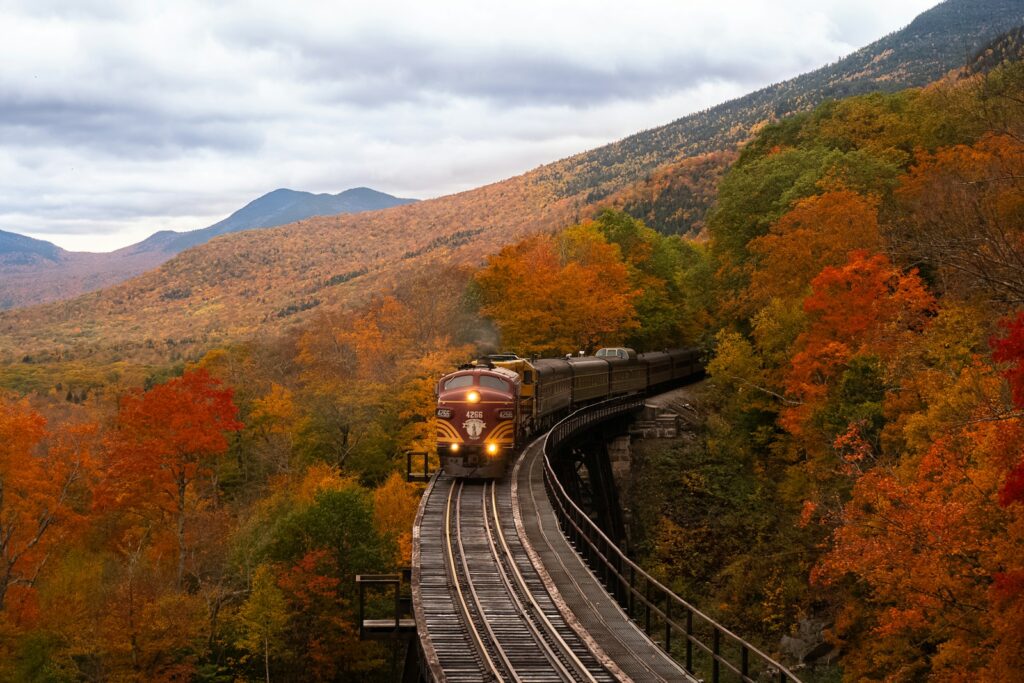
10. **Sky Train (Joseph Archer’s)**Fast forward to the 1950s, a period brimming with post-war optimism and a thirst for futuristic innovation. Joseph Archer’s elevated rail concept, aptly named the “Sky Train,” perfectly embodied this spirit. His design featured sleek, suspended carriages hanging from overhead rails, conceived with a clear dual purpose: to eliminate dangerous and congested grade crossings and to minimize the ground-level footprint required for urban transit infrastructure. It was an elegant solution to urban sprawl and traffic woes, aiming to free up valuable street space below.
Early prototypes of Archer’s Sky Train were enthusiastically demonstrated during this era, showcasing promising operational characteristics particularly well-suited for urban applications. The system offered a quiet, efficient, and visually appealing way to transport passengers, lifting them above the fray of street-level traffic. It was seen as a forward-thinking approach to urban mobility, offering a bird’s-eye view of the city below while reducing the impact on existing roads and neighborhoods.
Despite these promising demonstrations and its undeniable space-saving advantages, the Sky Train never achieved wide-scale adoption. The primary hurdle proved to be the prohibitively high initial infrastructure costs. Compared to conventional transit systems, the specialized elevated structures and support networks required for Archer’s design represented a massive upfront investment, one that public and private entities of the time were largely unwilling to bear. This financial barrier ultimately kept the Sky Train a brilliant concept rather than a pervasive reality.
11. **Meigs Elevated Railway / Steampunk Monorail**In the late 19th century, a time ripe with industrial innovation, inventor Josiah V. Meigs embarked on a quest to revolutionize urban transit, giving us what some affectionately call the “Steampunk Monorail.” This unique elevated system, also known as the Meigs Elevated Railway, aimed to tackle the growing transportation challenges of booming cities, directly addressing public complaints that the massive structures of conventional elevated railways cast dark shadows over streets below. Meigs envisioned a slender, single-rail solution that would be far less intrusive.
Meigs’ genius lay in his stabilized single-rail technology, featuring carriages that ingeniously straddled a central guide rail. Stability wasn’t achieved through gyroscopes, but rather through clever weight distribution, allowing the train to maintain balance with remarkable efficiency. This groundbreaking design was put to the test on a functioning quarter-mile demonstration track in Cambridge, Massachusetts, during the 1880s, where it successfully showcased its operational prowess and potential to address urban congestion without overwhelming the streetscape.
However, even with a successful demonstration and the clear advantages of his less obtrusive design, the Meigs Elevated Railway faced a confluence of misfortunes. Financial panics of the era made investment scarce, and deeply entrenched railway interests actively resisted the emergence of new competition. Adding insult to injury, historical accounts suggest the project may have even fallen victim to “vandalism possible from other competitors.” These combined challenges ultimately prevented Meigs’ innovative monorail from gaining the traction it needed for wider development and implementation, leaving it a fascinating relic of a bygone era.

12. **Lartigue Monorail**Sometimes, the most ingenious solutions come from the most unexpected places. Charles Lartigue’s balanced monorail system, conceived in the late 19th century, drew its inspiration from an unlikely source: camels carrying balanced packs across vast desert regions. Lartigue observed how these animals distributed their loads evenly on either side of a central spine, and he applied this principle to create a railway where the train’s weight was similarly split, straddling a single, elevated rail.
This unconventional design was far from a mere concept; it proved its viability through practical application. A commercial line of the Lartigue Monorail successfully operated in Ireland from 1888 to 1924, faithfully serving its purpose for over three decades. This operational success stood as a powerful testament to the system’s engineering soundness and its ability to provide reliable transportation in real-world conditions, becoming a local marvel and a unique fixture of the landscape.
Yet, despite its impressive longevity and demonstrated viability, the Lartigue Monorail’s expansion was severely limited by two significant factors. First, its unique design made it inherently difficult, if not impossible, to accommodate conventional railway connections, creating an isolated system. Second, the complex switching mechanisms required for its balanced operation proved to be a major hurdle. These intrinsic limitations, though understandable given its radical approach, ultimately prevented the Lartigue Monorail from integrating into broader railway networks, confining it to a fascinating, but isolated, chapter in rail history.
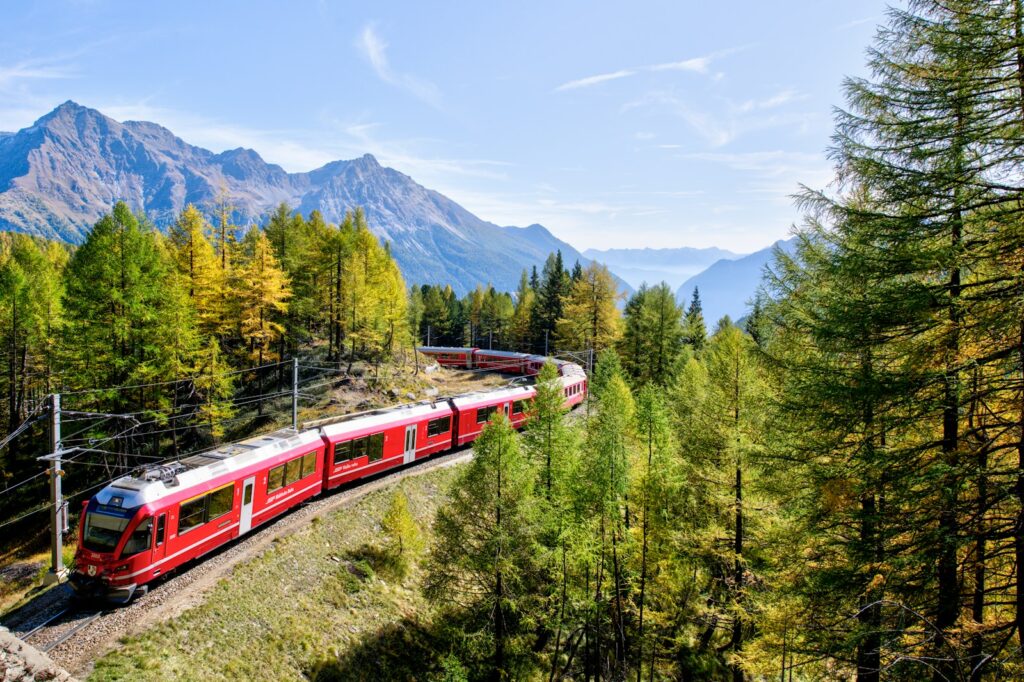
13. **M-497 Experimental Jet Train (Black Beetle)**What happens when you combine raw aviation power with a railway carriage? In 1966, the New York Central Railroad Corporation answered that question with the M-497, affectionately known as the “Black Beetle.” In an audacious experiment, engineers mounted two powerful GE J47-19 jet engines, typically found on intercontinental bombers, onto a modified Budd RDC-3 railcar. The goal was to push the boundaries of rail speed and test the limits of what was possible on existing tracks.
The outcome was nothing short of spectacular. On a test track in Ohio, the M-497 Black Beetle roared to an astonishing speed of 183.68 mph, a record that, to this day, remains unbeaten in the United States for a rail car. This incredible feat captured the imagination of the public and showcased a dazzling, if slightly mad, vision of high-speed rail. The trials were successful, proving the sheer power and potential of jet propulsion on rails, and perhaps surprisingly, the project was even considered relatively cheap to build.
However, despite its record-breaking performance and low construction cost, the M-497 Black Beetle’s journey ended prematurely. When the New York Central Railroad merged with its competitor, Pennsylvania Railroad, the project was unfortunately abandoned amidst the organizational shifts and new priorities. The jet engines were eventually removed, and the modified car continued to serve conventional duties until its retirement in 1977, a powerful and iconic reminder of a daring experiment that glimpsed a future of incredibly fast, jet-powered trains.

14. **Alweg Monorail**In the mid-20th century, a visionary Swedish entrepreneur and one of the world’s wealthiest men, Dr. Axel Lennart Wenner-Gren, harbored a grand dream: rapid, high-speed trains that would redefine inter-city travel. In 1950, he established the Alweg Transportation Company to bring this dream to fruition, setting out to develop monorail systems that offered superior performance and passenger experience.
Alweg’s monorail prototypes were not just aesthetically pleasing; they proved to be remarkably capable from an engineering standpoint. Critically, these trains demonstrated an impressive ability to handle highly banked curves with ease, a feature of immense importance when designing routes through varied and challenging terrains. This technical prowess, combined with a sleek, futuristic design, led to some high-profile, if limited, installations, most notably the iconic Monorail system that debuted at Disneyland in 1959 and another small line launched in Seattle for the city’s 1962 World’s Fair.
Despite these successful, high-visibility demonstrations that captivated millions, the Alweg system struggled to attract widespread investment for large-scale urban or inter-city deployment. The financial commitment required for new, dedicated monorail infrastructure was substantial, and conventional rail systems remained the default choice for major networks. It wasn’t until the company and its technology were eventually acquired by Japan’s Hitachi Monorail company that the Alweg system found its true, albeit delayed, success in expanding monorail networks, particularly in Asia, demonstrating that even groundbreaking ideas sometimes need a second chance and a new steward to fully blossom.

15. **TEB Train (Transit Elevated Bus/Train)**Just a few years ago, in 2010, the world watched with a mix of excitement and skepticism as a Chinese company unveiled a truly audacious concept: the Transit Elevated Bus (TEB), or as it was later dubbed, the Transit Elevated Train (TET). The idea was simple yet revolutionary—a massive, straddling vehicle that would glide over existing road traffic on specialized tracks, allowing cars to pass freely underneath its cavernous belly. A captivating video released in 2016 further fueled the buzz, promising a groundbreaking solution to urban congestion.
However, as the concept gained visibility, practical concerns began to mount. Questions arose about how tall vehicles or cargo trucks would interact with the TEB as it passed overhead. Critics pondered its compatibility with existing footpaths, bridges, and the myriad complexities of urban infrastructure. Despite these public doubts, a full-scale prototype was astonishingly built and unveiled in the summer of 2016 in Qinhuangdao, China. This functional model demonstrated its formidable capacity, with makers claiming it could carry the equivalent weight of 40 buses, towering over two meters of traffic below.
But the dream of the TEB/TET quickly soured. Alarm bells began ringing when it was revealed that the company behind the project, Huaying Kailai, was a blacklisted corporation known for suspicious schemes. The audacious project, initially hailed as a futuristic marvel, rapidly unraveled under a cloud of controversy and alleged fraud. Just a few days after its public debut, officials shut the project down, and reports surfaced that over 30 people, including its head Bai Zhiming, were arrested.
The swift and dramatic downfall of the TEB/TET project served as a stark, cautionary tale in the world of transportation innovation. What began as a bold, visually striking answer to urban traffic, promising to revolutionize public transit, ultimately became a symbol of unfulfilled potential and, more troublingly, a highly public corporate scandal. It remains a memorable, albeit unfortunate, example of a train design that never truly made it to widespread, legitimate tracks.
Innovation’s Winding Track: Their Enduring Legacy
As we bring our journey through these visionary, yet unrealized, train designs to a close, it’s clear that the history of rail transportation is far richer and more imaginative than the everyday locomotives we see. These forgotten pioneers and ambitious experiments, from atmospheric propulsion to jet-powered marvels and gravity-assisted tubes, represent a profound testament to the relentless human drive to improve, to connect, and to push the boundaries of what’s possible.
While conventional railways ultimately prevailed, these conceptual detours were far from failures in spirit. They provided invaluable engineering lessons, sparked crucial debates, and laid conceptual groundwork that continues to influence modern high-speed rail, magnetic levitation, and urban transit systems. Their legacy reminds us that even the trains that never made it to widespread tracks leave behind a powerful impact, shaping the innovations of future generations and continually inspiring us to dream bigger, even when the path is winding and uncertain. After all, the journey of innovation is often as enlightening as the destination itself.

